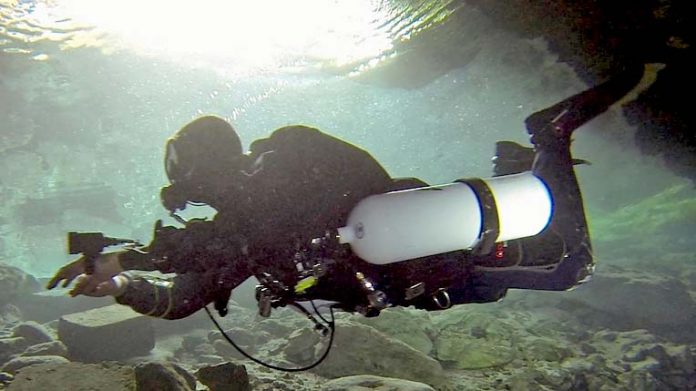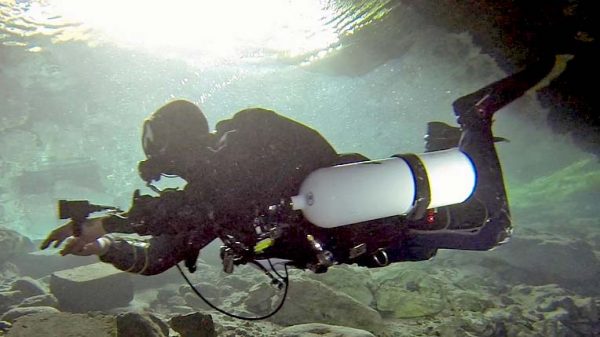

A RESEARCH project to analyse fossils discovered in Limestone Coast sinkholes could boost tourism in the region if Federal Government funding is secured.
Mount Gambier City Council last week pledged its support towards the “ground-breaking project” by announcing $27,000 of funding over the next three years.
However, it will only going ahead if the Federal Government’s Australian Research Council provides funding for the proposed project.
If funding is secured, the project will be led by Griffith University’s senior research fellow, Dr Julien Louys PhD, who has partnered with council and the Cave Diving Association of Australia (CDAA).
“We want the project to go ahead and we have put our proposal forward to the Federal Government,” he said.
“It cannot go ahead without them and it is quite a competitive field to try and secure the funding because applications can come from any research discipline.”
Dr Louys said the project would be unique due to the distinct preservation of the megafauna fossils, which could be recovered.
“We know their are fossils down their in these sinkholes and they are unique because of their location,” Dr Louys said.
“Because the sinkholes have been flooded by water, things cannot get to fossils, so they have been preserved.”
He said the fossils would hold a lot of information about extinct species.
“They are unique for Australia – above the surface we usually find fragmented fossils, which are harder to analyse,” he said.
“By having cave divers go down and retrieve these fossils from specific locations, we can establish what sort of environments these animals lived in.”
Council believes the project can help promote tourism in the region through public displays, creating books, pamphlets and posters promoting the science discovered.
It is hopeful it also presents an opportunity to capitalise on the high adventure and unique appeal of underwater cave exploration.
Dr Louys said it could present a broader tourism attraction for the region.
“People are obviously aware of the fossils discovered at the Naracoorte Caves and we are hoping to broaden that historical scientific interest right down to Mount Gambier,” he said.
Dr Louys said he had spoken with the CDAA about the project and revealed their excitement about being involved.
“They have the skills, equipment and qualifications to go down and retrieve these fossils, so we cannot do it without having them on board,” he said.
“They are excited to do something that will create interest and help tell us more about the extinct species that lived in the region.”
CDAA spokesperson Peter Wolf confirmed divers would welcome the opportunity to get involved in a ground-breaking project.
“We have got divers with a scientist background, but we have also got divers from all other walks of life who would love getting involved,” Mr Wolf said.
“There have been a lot of projects over the years, particularly in Fossil Cave, but this it the first time in the last few decades that I can think of where reinvigorated research using modern techniques will be conducted in a variety of the Limestone Coast caves.”
He said this project could shed more light on the Limestone Coast history.
“Most people are not aware of the unique significance of the fossils that can be found in the caves,” he said.
The project will include contributions from the South Australian Museum and Department of Environment and Water, as well as the University of South Australia, The University of Queensland and the University of Adelaide.
The success of the application for Federal Government funding is expected to be known around March next year.
Dr Louys said if successful, research will start shortly thereafter.





